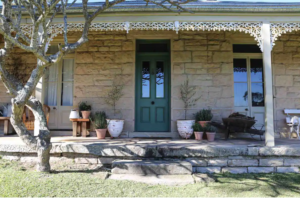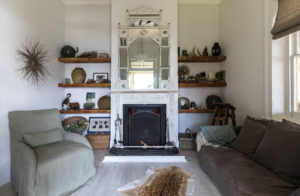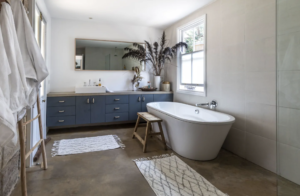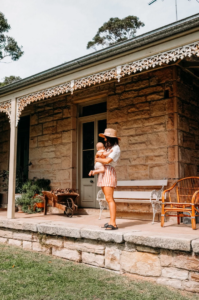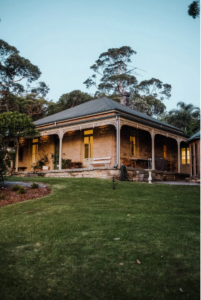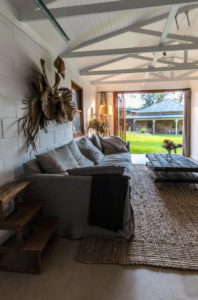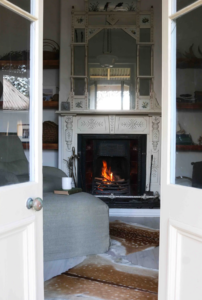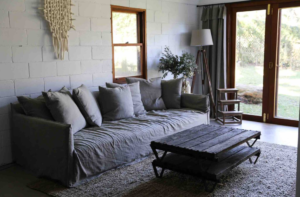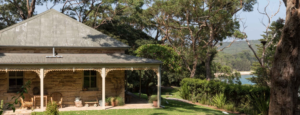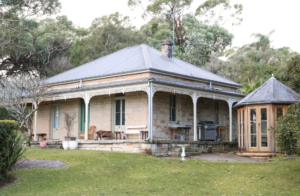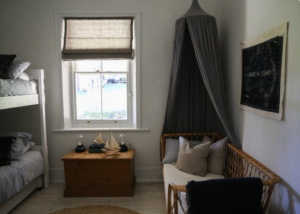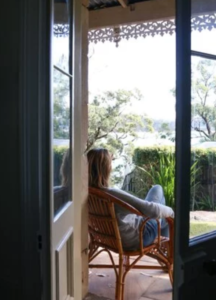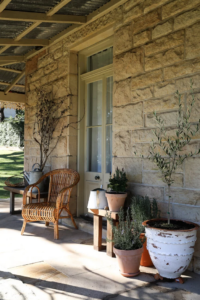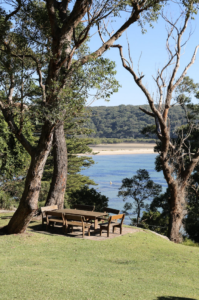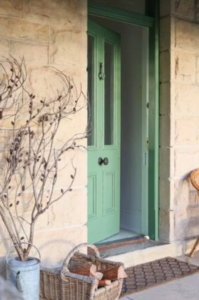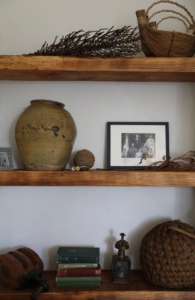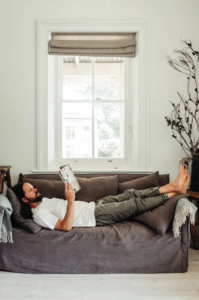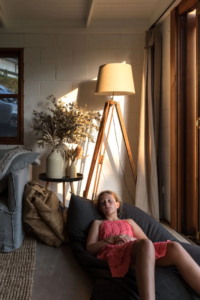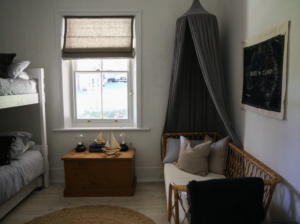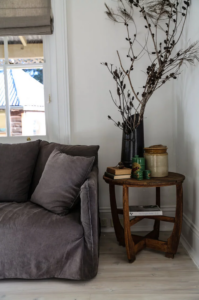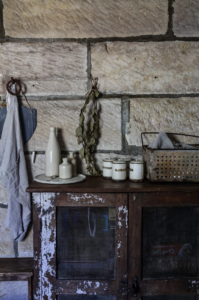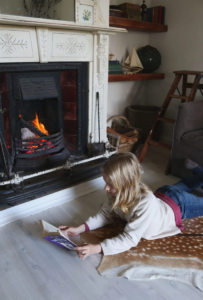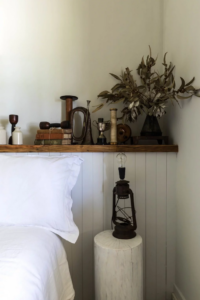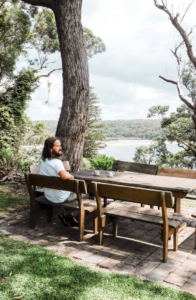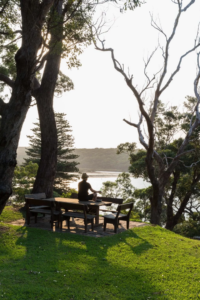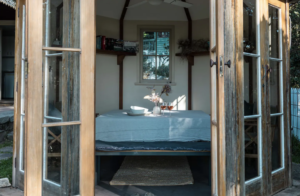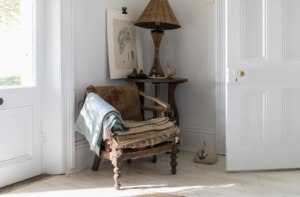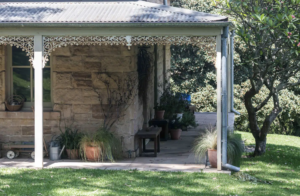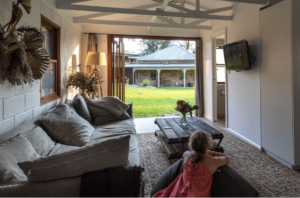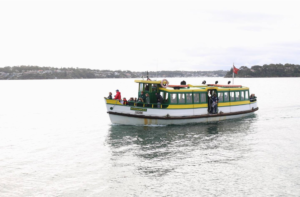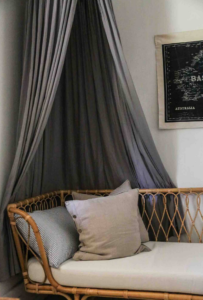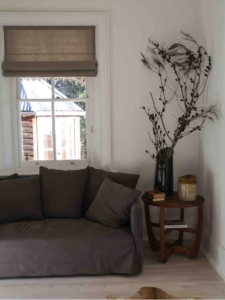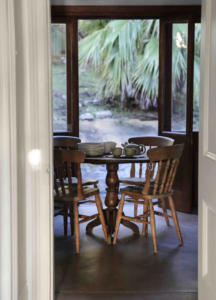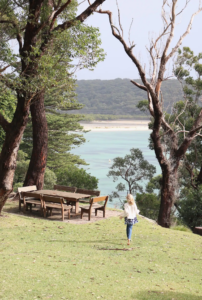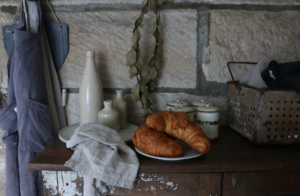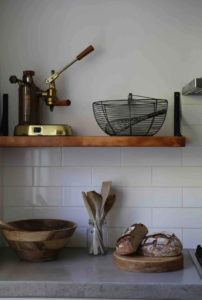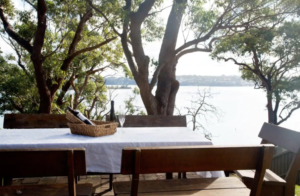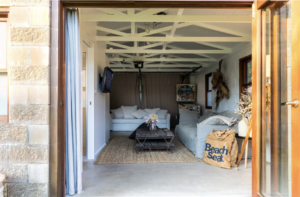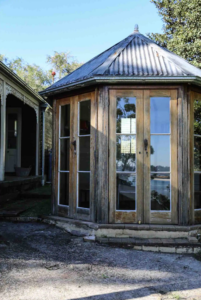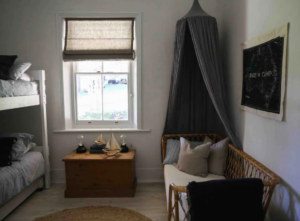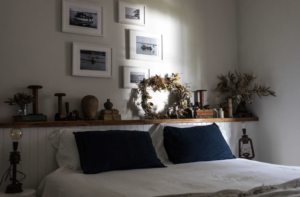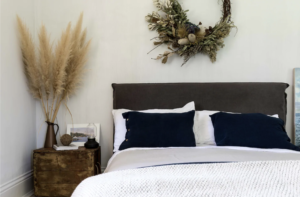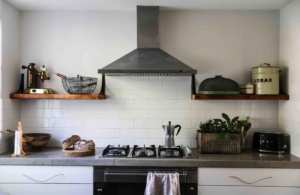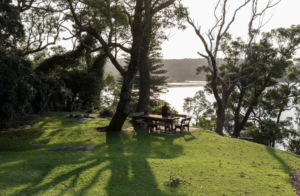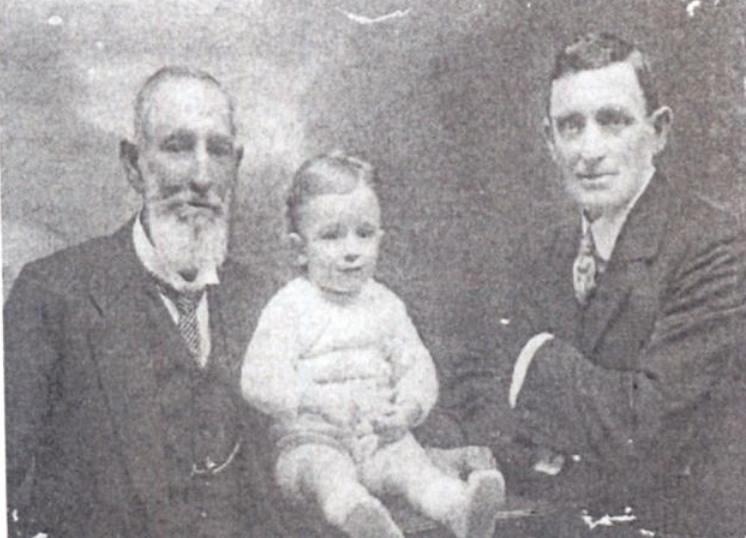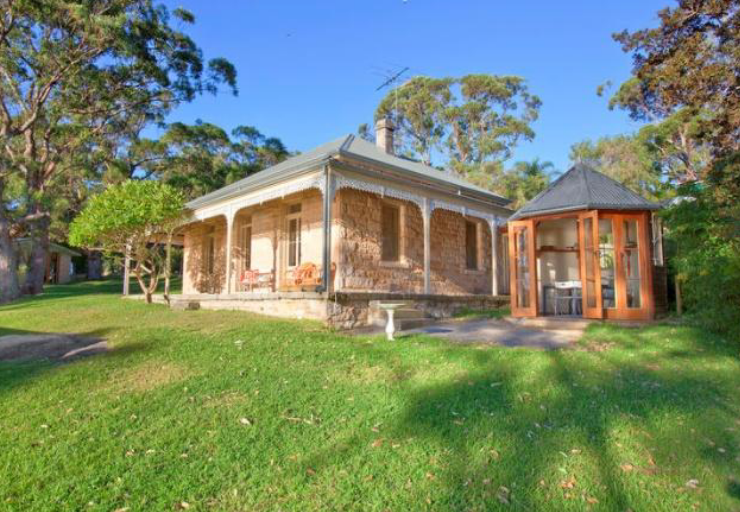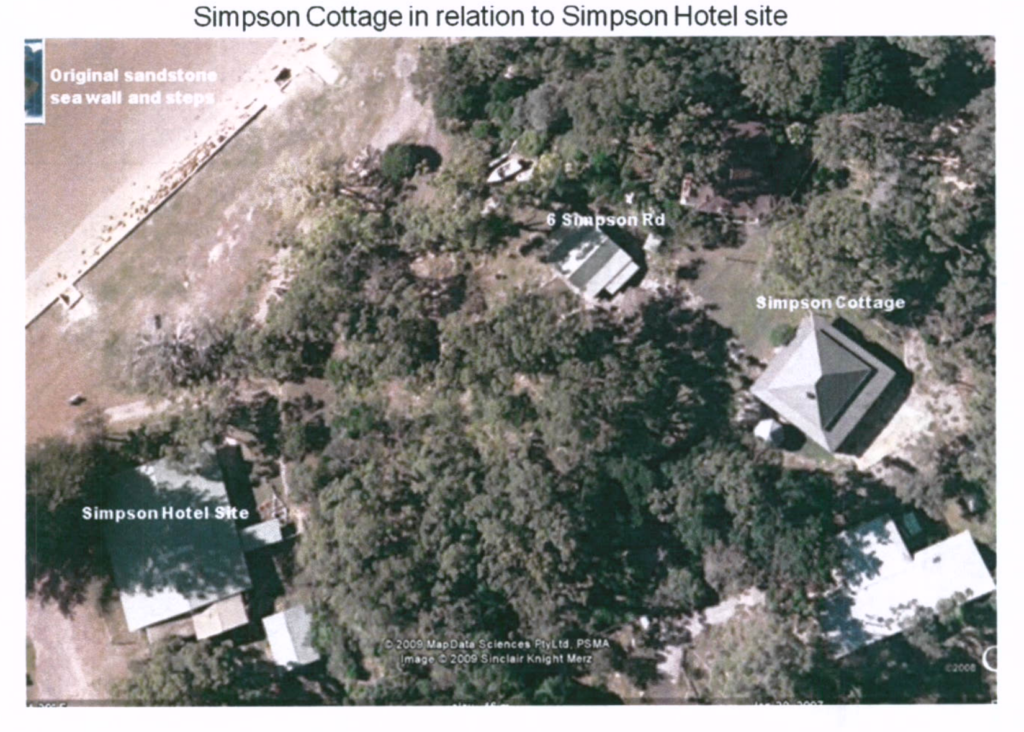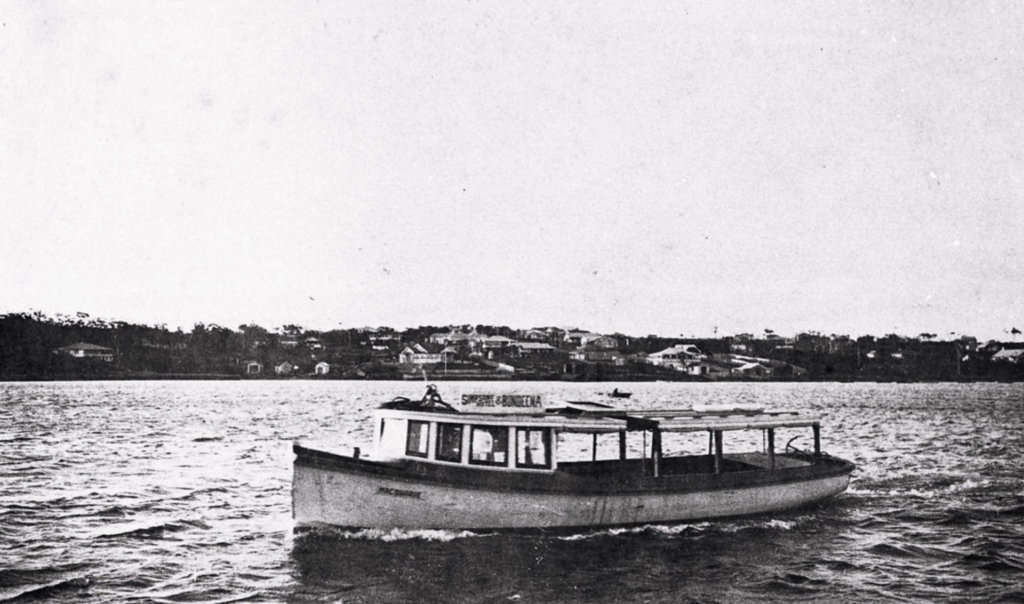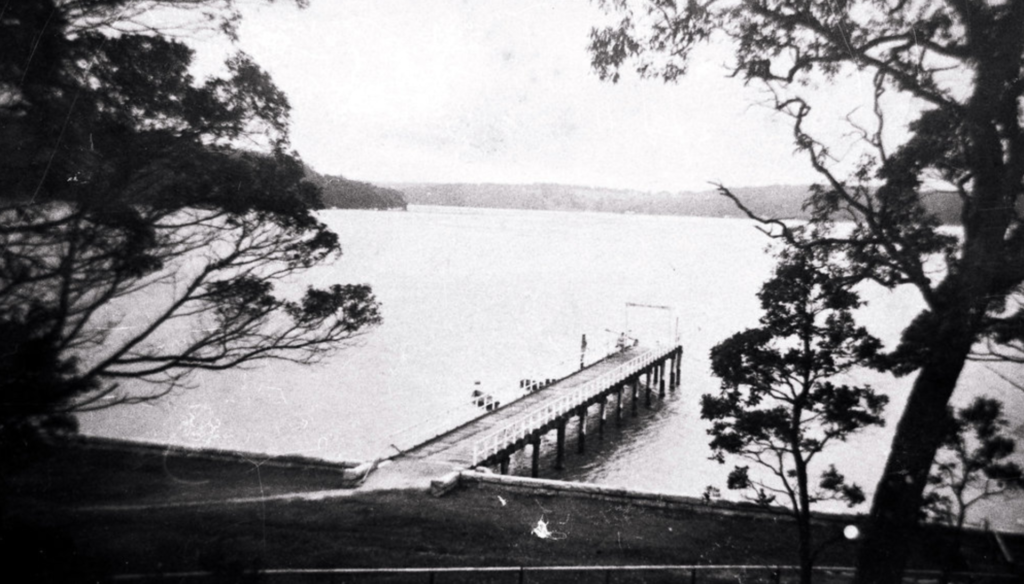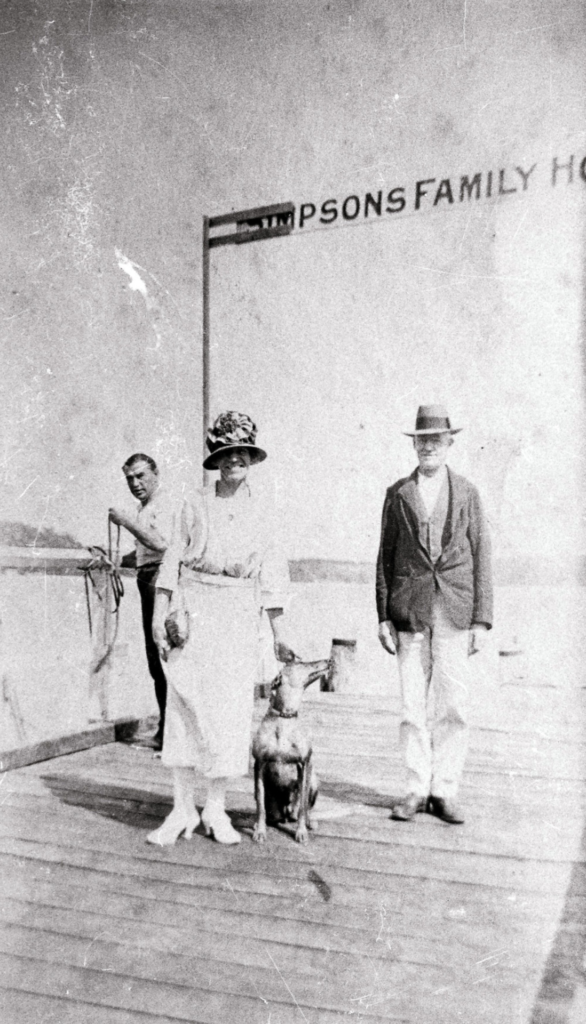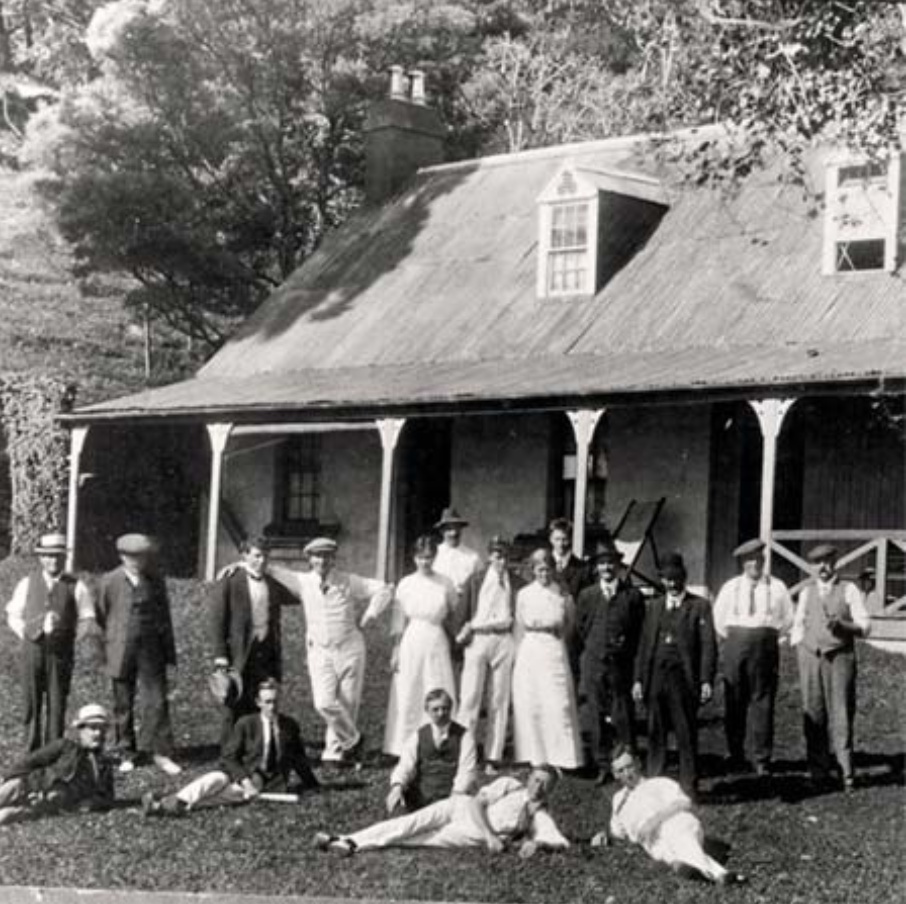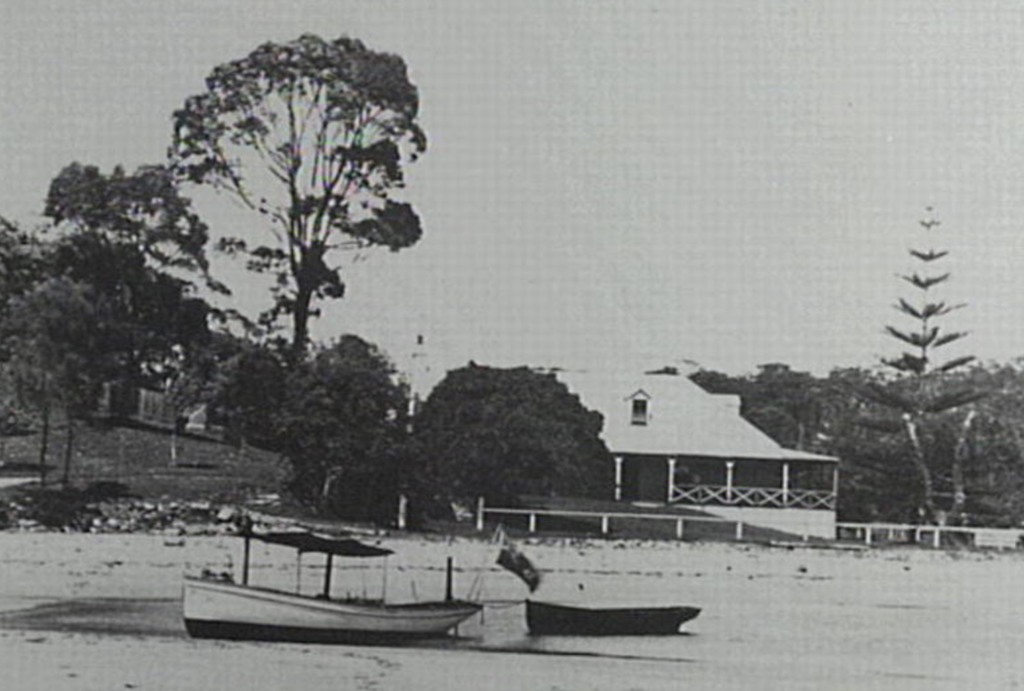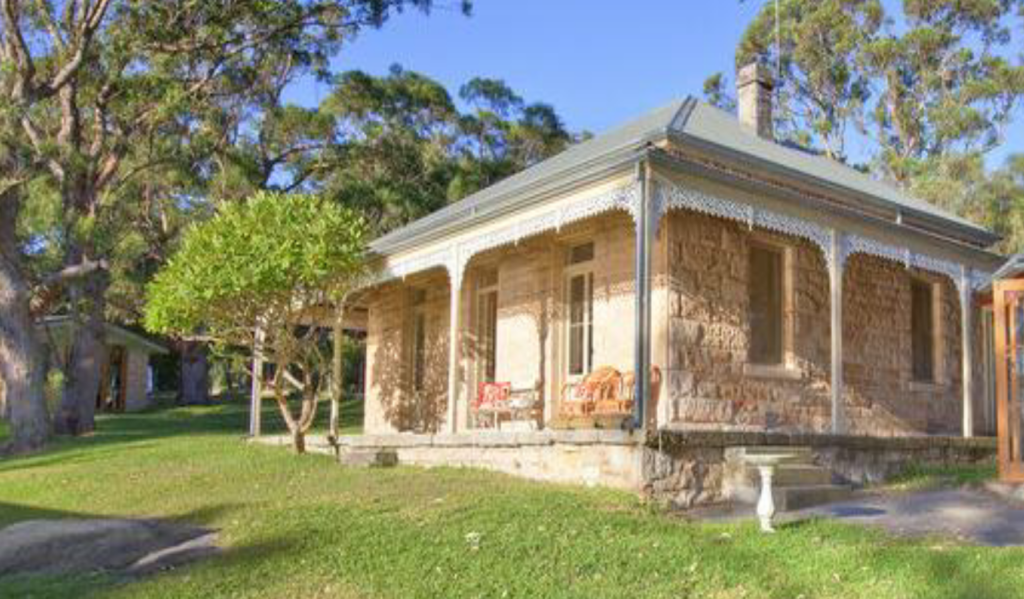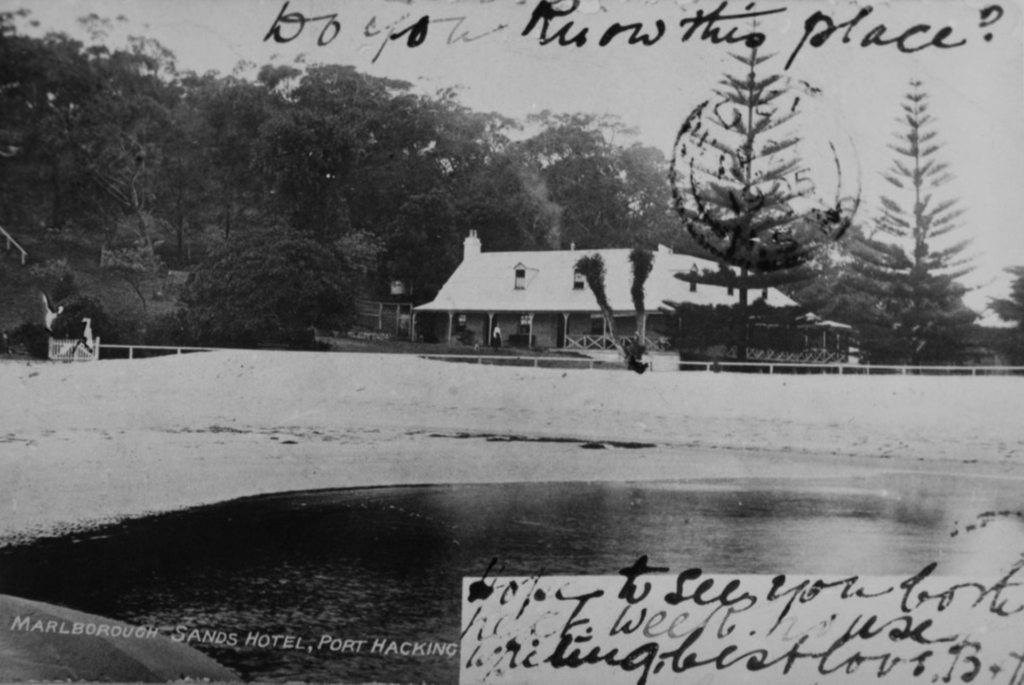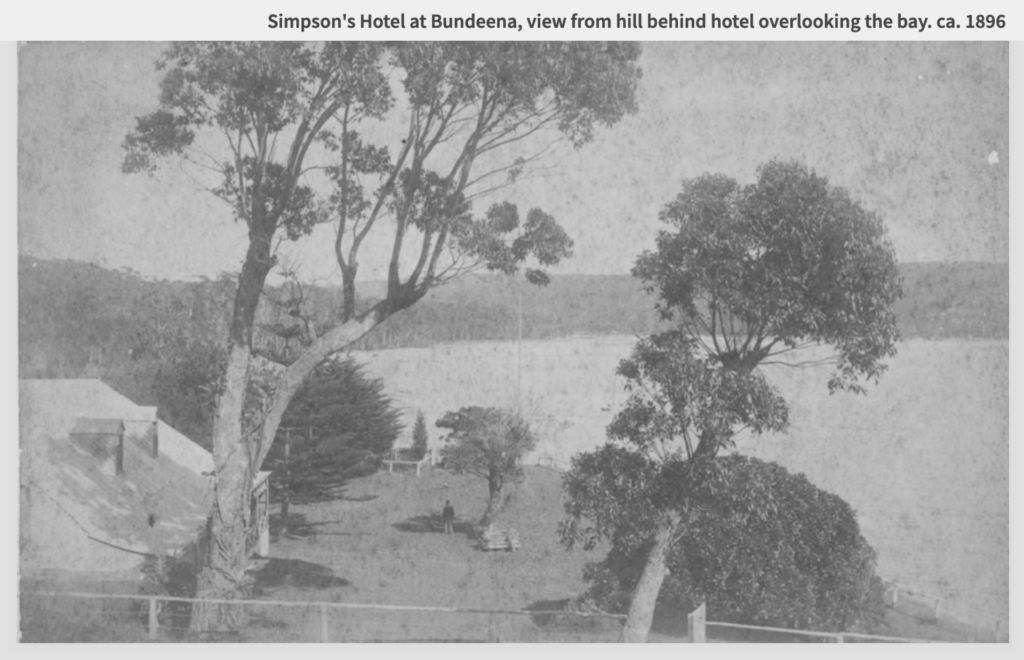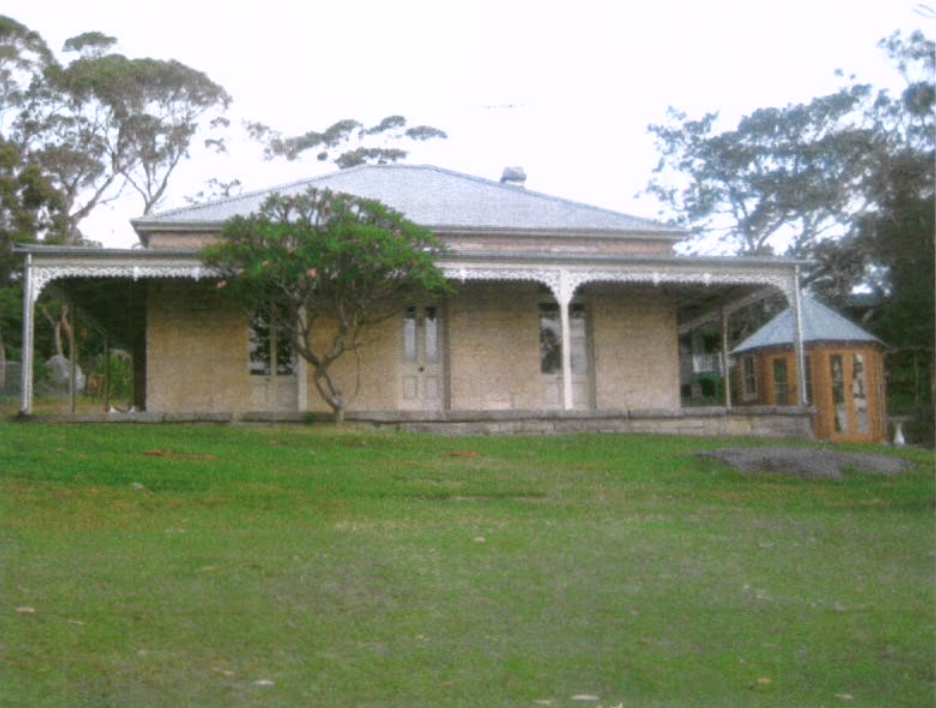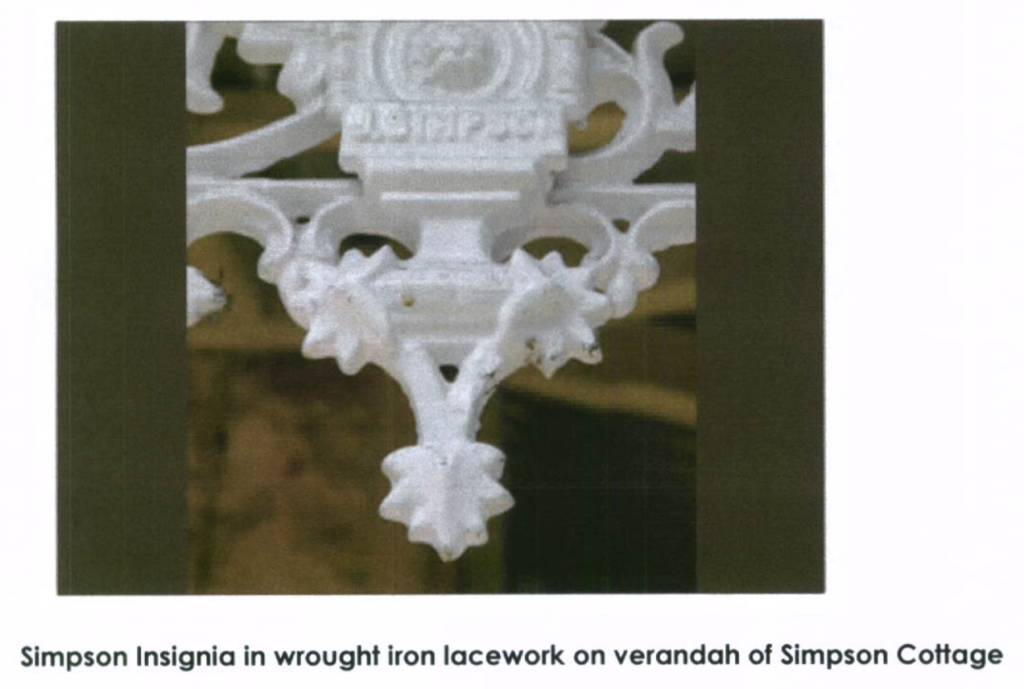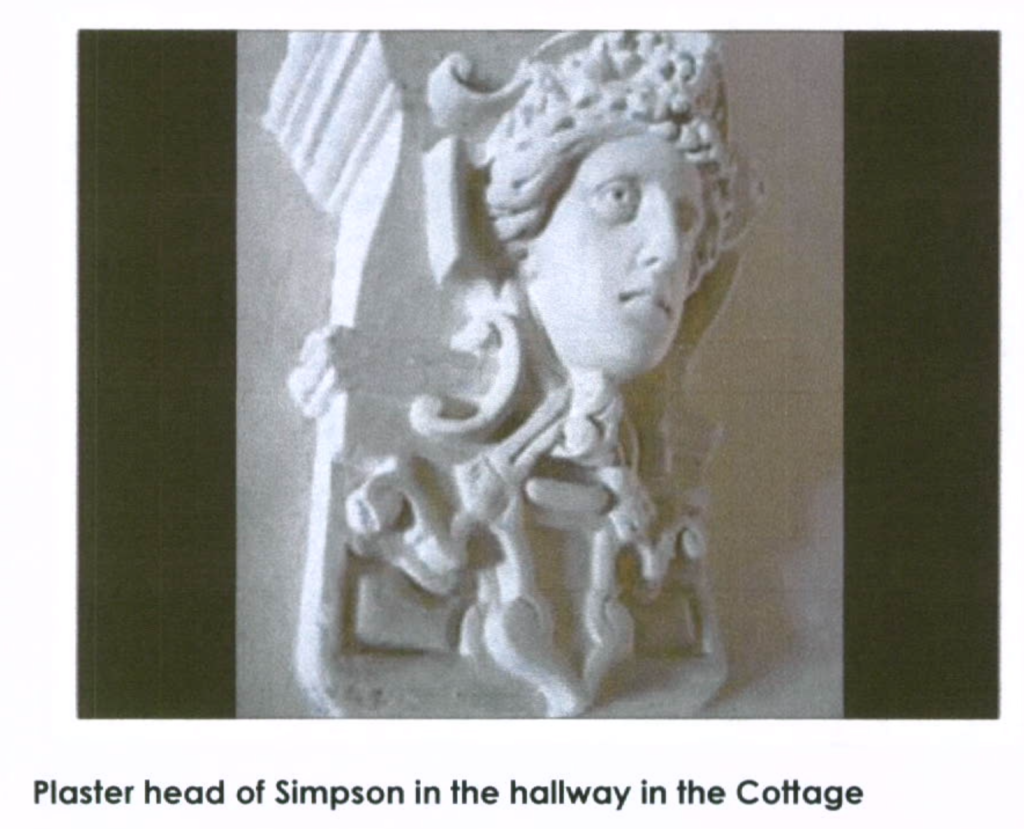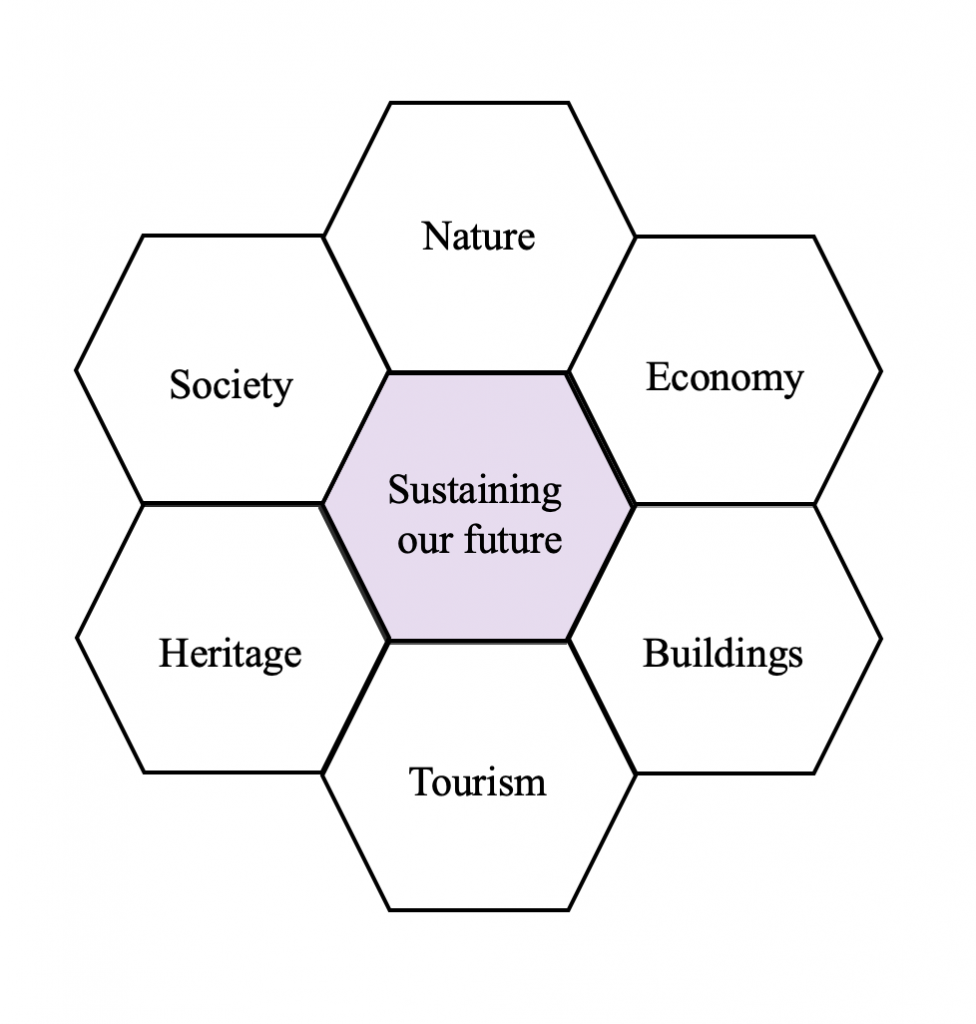Sources : Statement of Environmental Effects for Change of Use for Simpson Cottage June 2009 by Monique Corah Design; Sutherland Shire Library; Heritage Listing; Sutherland Shire Historical Society Bulletin Vol 14 No4 November 2010.
Origins
Recognition of country ....
In 1863, George Simpson, a market gardener, was granted 20 hectares of land (now Bonnie Vale) on the southern side of the Hacking River and was the first to establish a permanent settlement there when in 1894 he built "a stone house, dairy, stockyards and a pig sty" valued at 150 pounds inherited by his son William in 1866. That 'stone house', now known as Simpson Cottage, was built with sandstone blocks chipped out by convicts whose signature marks are still visible today.
The Bundeena area was originally known as Byrne’s Bush. George’s wife, Mary, planted one of the Norfolk Island pines at Kurnell in 1845 on the spot where Cook first landed in Australia.
Simpson Cottage history
William was not a full-time resident until the 1870s and was at one time employed as a park range by the Park Trust. The Sutherland Foreshore Heritage Study (1997) described the cottage as "...possibly the most substantial house to survive in the Bundeena area".
The Jervis family had been leasing the cottage for many years, possibly since WW2, as they had a rent controlled tenancy and occupied it in 1972.
For 10 years from the early 1990s, the cottage was derelict but remained in the Simpson family until 2003, when the Corah family purchased the cottage from William Simpson's great grand-daughter, and sensitively restored the entire house, added modern conveniences, and a new extension which housed a modern bathroom and kitchen. Landscape architect Monique Corah created a natural garden to complement the heritage ambience of the original cottage.
The Larnach family purchased the cottage in 2010 and continue to lease it for self-catering accommodation.
William Simpson, Entrepeneur
William Simpson, described in his obituary as the 'Father of Port Hacking', believed there was a market for people who wanted to come across from the other side of the river and in the 1880s started to run a ferry from "Simpson's Wharf" he built below the cottage which carried visitors to & from Turriell Point (now Burraneer Bay) until the 1920s.
William decided that the largely "European" visitors would like more of a feeling of home and introduced a number of deciduous trees and also deer, originally paddocked but of course they escaped and are still a common problem in the National Park today.
In 1887 William & his wife Susannah extended an earlier 1867 structure to create the large attic roofed Tyreal House, more commonly known as "Simpson's Hotel", near the beach and overlooking Cabbage Tree Point, which by the 1890's was a local landmark and very popular destination with honeymooners and families. The first school in Sutherland Shire was held in a room of the hotel - members of the Simpson family and a few other children were taught there.
William was influential in the creation of the Royal National Park in 1879 adjacent to his property (the worlds 2nd national park after Yellowstone) and was believed to be one of the last people to dine with King Koomah, the last Georges River King of the Aborigines.
In 1905 the hotel was leased to a couple called the Kinghams. and was renamed as the Marlborough Sands Hotel, but then to Simpson's Family Hotel in 1906. After William's death in 1918, the site was sold by the Simpson family as part of the Port Hacking Hotel Estate in about 1920 to Harry Harry but was occupied by a number of other people over the following years.
The Bonnie Vale area was being increasingly used for camping and the hotel was probably responsible for managing the camping area. Around 1935 George Feldwick purchased the hotel and converted it into furnished flats and a store. In 1947 the National Park Trust purchased the the site and it was dedicated for public recreation. The hotel unfortunately burnt down in 1955
